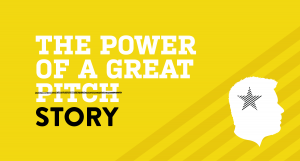Prior to joining the Grey Matter team, I spent years marketing and selling products in an industry that isn’t exactly top-of-mind for the average consumer. While it was challenging at times, I’m certainly better for it – mostly because it forced me to sharpen my storytelling skills.
No one likes being sold to. But tell me a great story, I’m much more likely to engage and potentially share it with others (if it’s worth being shared).
Thanks to the many great mentors I’ve had throughout my career, I’ve adopted a framework to quickly craft a simple, memorable and impactful story. Now, if you’re like me, the thought of yet another “marketing framework” induces the need to roll one’s eyes. But, of all the frameworks I’ve seen or read about, this is the one I use almost every single day.
It’s simple, really. Ready?
Every good story has a beginning, middle and an end.
Ta-da. There it is!
WAIT … don’t hit unsubscribe just yet.
Said another way, think of your product story in the following three phases: Situation, Complication and Resolution.
Situation: Here the goal is to provide context for your story. Think through what’s relevant (past or present) that will help create a common stage for your audience. If you get this right, you’ll see heads nodding in agreement as you share.
Complication: Now it’s time for the twist. Point to a specific problem or set of problems that your innovation solves – an insight, tension or gap in the way we live, work and behave. Be sure your complication is based on the previously mentioned situation. If you get this right, you’re pointing to a relevant concern of your audience that they may not have considered.
Resolution: Now it’s time to introduce your new innovation that is specifically optimized to solve the aforementioned complication. Your product, positioned as the hero, swoops in to save the day, relieving the world of the previously unsolved complication.
Motorola has a great example of this framework with the recent introduction of their new Moto Z phone. View below, and listen carefully for each chapter of the story.
Did you hear it? It breaks down like this …
Situation: Smartphones changed the game in 2007.
Complication: Nothing has really changed since then (ex: slightly better camera, moved headphone jack, etc.).
Resolution: The new Moto Z phone brings real innovation to the category by offering a speaker attachment, projector attachment and a better camera, all with the promise of more innovation next year, and the year after.
Now, there’s a lot that still makes a story great. Including a great product. But as you listen, read or watch the messages coming to you as a consumer, I promise you’ll hear echoes of Situation, Complication and Resolution within many of them.
So, try it out. What project do you have that needs a great story? Give this framework a try.


